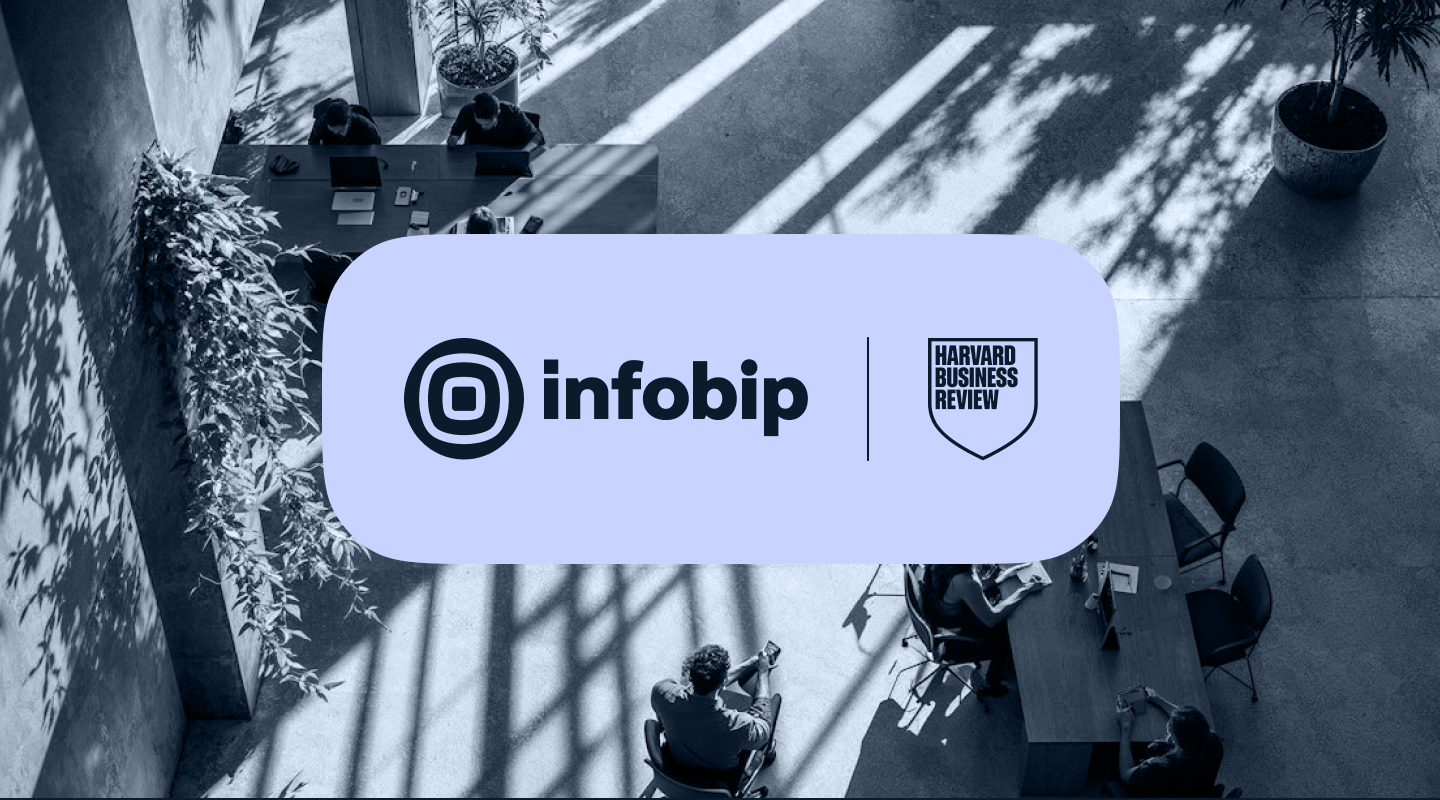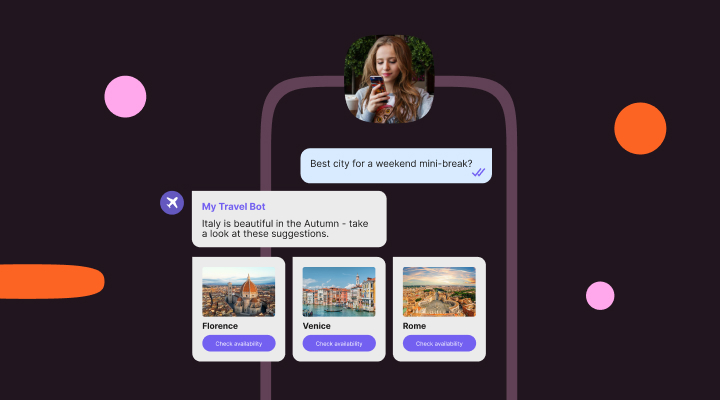Professional SMS & text message examples and templates
What makes a professional SMS effective? It’s about clarity, respect, and timing. A professional SMS is short, direct, and stays true to your brand’s voice. Let’s explore how to write concise, clear messages that draw people in and keep them engaged, with real professional text message examples you can use today.

SMS messages might seem old-school, but they’re still one of the most reliable ways to connect with your customers. With open rates close to 98 percent, professional SMS messages work like those timeless storylines—building trust and delivering results with a few well-chosen words.
Why professional SMS matters
In today’s crowded digital world, SMS cuts through the noise. Over 90 percent of people read SMS messages within three minutes. But there is a challenge: you only have 160 characters to say what matters.
A professional SMS respects your customer’s time. It is short, direct, and avoids slang or filler. Instead of adding fluff, it gives useful details and a clear next step.
Professional text messages are more than simple updates or alerts. They build trust and create a positive experience for your customers. Every interaction shows that you value their time and care about clear communication.
Professional SMS supports different team goals:
- Integrated marketing manager: A professional SMS keeps your brand’s tone consistent across every channel, building trust with your customers.
- Digital campaign strategist: A clear, direct SMS grabs attention and delivers real results.
- Customer engagement specialist: Short, respectful messages help people feel valued and understood.
- Sales enablement manager: Well-written messages help you close deals without being pushy.
- Data & analytics lead: Testing different messages shows what works and what to improve next.
Professional SMS also helps you stay compliant. When you respect what users prefer and follow legal guidelines, your messages are more likely to be read and acted on.
Short, clear, and direct messages are the key. Whether you’re confirming an appointment, sending a payment reminder, or following up with a client, professional SMS builds trust and strengthens your brand.
Best practices for writing professional SMS messages
All professional SMS messages follow a few basic rules. Let’s examine what makes them work.
- Get permission first: Always make sure your end-user wants to hear from you. Many places also require it by law. Use clear opt-in language. Make it easy for people to opt out. For example, say “Reply YES to receive updates” or “Reply STOP to unsubscribe.” This sets clear expectations from the beginning.
- Keep it short and clear: With 160 characters, every word counts. Cut out extra words, jargon, or anything that does not help. If you can shorten your message without losing the point, do it.
A short, clear professional message gets read and acted on. For example: Your order #12345 is ready for pickup. Show this message at the counter. - Make it personal: Use the recipient’s name or mention something specific to them. These small details make your messages feel more personal and human. For example: Hi John, your appointment with Dr. Lee is confirmed for Monday at 10 AM.
- Include a clear call-to-action (CTA): Tell your customers what to do next. Use direct CTAs like “Reply YES to confirm” or “Click here to pay” to make the next step simple and clear. A clear CTA guides your end-users and improves engagement.
- Avoid slang and emojis: In a professional text message, skip slang and emojis. They can make your message feel too casual or confusing.
Simple, direct language is easier to understand and more professional. Always ensure your tone stays aligned with your brand voice, even when keeping things clear and concise. - Send messages at the right time: People do not want business messages at 2 AM. Send your messages during business hours in your customer’s time zone. This makes sure they are seen and welcomed.
When you time it right, your customers are more likely to read and act. - Keep your brand voice clear: Even short SMS messages should match your brand’s style. Whether your brand is formal, friendly, or somewhere in the middle, keep your tone the same. Consistency builds trust and makes your brand easy to spot.
Professional text message examples by use case
Let’s see these best practices in action. These professional text message examples are short, direct, and work in real-life situations.
Appointment reminders
![Hi [Name], this is [Business Name] confirming your appointment for [Date] at [Time]. Reply YES to confirm or call us at [Number] to reschedule.](https://cdn-web.infobip.com/uploads/2025/07/appointment-reminder-sms-text.png)
Why it works: It is short, polite, and clear, with a simple way to respond or reschedule.
Payment reminders
![Friendly reminder: Your payment of [Amount] is due on [Date]. Please reply with questions or visit [Payment Link].](https://cdn-web.infobip.com/uploads/2025/07/payment-reminder-sms-1.png)
Why it works: It is direct and gives a clear next step, without being pushy.
Feedback requests
![Hi [Name], we would like your thoughts on your recent visit. Please reply with your feedback or fill out our quick survey: [Link].](https://cdn-web.infobip.com/uploads/2025/07/feedback-reminder-sms-1.png)
Why it works: It is polite and encourages the customer to share their opinion.
Event invitations
![Join us for [Event] on [Date] at [Location]. Limited spots! Reply YES to RSVP.](https://cdn-web.infobip.com/uploads/2025/07/event-invite-sms-1.png)
Why it works: It creates urgency and tells recipients exactly how to join.
Sales follow-ups
![Hi [Name], following up on your interest in [Product/Service]. Let us know if you have questions or want a custom quote.](https://cdn-web.infobip.com/uploads/2025/07/sales-follow-up-sms-1.png)
Why it works: It offers help in a direct, friendly way.
Reactivation messages
![We have missed you! Get [Discount/Offer] on your next order with code [Code]. Shop now: [Link].](https://cdn-web.infobip.com/uploads/2025/07/reactivation-message-sms-1.png)
Why it works: It is warm, direct, and gives a clear offer.
Thank you messages
![Thank you for choosing [Business Name]. We appreciate your support!](https://cdn-web.infobip.com/uploads/2025/07/thank-you-message-sms-1.png)
Why it works: It is polite, short, and positive.
Service notifications
![Your order #[Order Number] has shipped and will arrive by [Date]. Track it here: [Link].](https://cdn-web.infobip.com/uploads/2025/07/service-notification-sms.png)
Why it works: It shares clear information your customer wants to know.
Compliance and security updates
![Your account password was changed on [Date]. If you did not make this change, call us at [Number] right away.](https://cdn-web.infobip.com/uploads/2025/07/compliance-and-security-sms-1.png)
Why it works: It is direct, clear, and shows you are focused on security.
Why personalization matters
Personalizing your SMS messages makes them more engaging and relevant. Adding simple details, like the recipient’s name or a recent purchase, can make your texts feel more personal. These small touches show you care, helping you build stronger connections and get more real responses.
Additional examples for broader use cases
Account balance updates
Your current balance is [Amount]. Visit [Link] for details or to make a payment.
Delivery confirmation
Hi [Name], your package from [Business Name] was delivered today. Let us know if you need help with anything.
Holiday greetings
Wishing you a joyful holiday season from all of us at [Business Name].
Policy updates
Our terms have been updated. Visit [Link] to review the changes.
Product launch announcements
Exciting news! Our new [Product] is now available. Learn more at [Link].
Tips for improving professional SMS engagement
Writing good professional SMS is about testing and improving. Here’s how to do it.
- Test different messages: Try different CTAs, short formats, or times of day. Testing helps you find what your audience likes best.
- Track performance: Look at open rates, click-through rates, and opt-out rates. These numbers show what is working and what you can adjust.
- Segment your customers: Group your customers by what they want or how they have interacted with you. Short, direct professional messages that match their interests are more likely to work.
- Use feedback to improve: Your customers’ questions and reactions are your best tool. If they keep asking the same thing, update your messages to answer them better.
- Stay compliant: Get permission first. Make it easy for people to opt out. Follow local rules like the TCPA or GDPR to protect your audience’s trust.
- Keep your voice consistent: Even as you test new ideas, stay true to your brand’s voice. A clear, steady tone builds trust and makes your brand easy to spot.
How to get started
If you are new to professional SMS, start with these templates and examples. Build your first campaigns around these guidelines:
- Short and direct messages.
- A clear CTA.
- No slang or filler.
- Timing that respects your customers.
- A tone that matches your brand.
As you see results, expand your messages with personal touches and targeted content. Keep refining based on what your customers respond to.
If you’re curious how professional SMS examples work in real campaigns, you could start by trying out a free trial of an SMS platform. This can help you test different messages and measure what works best for your customers.
Try it yourself
A professional SMS is short, clear, and always true to your brand. Do not send lots of messages—send the right ones at the right time.
Use these professional text message examples as your starting point. Test them, refine them, and keep building messages that add real value and earn trust. Every word matters. Make each one count.
If you need help creating SMS campaigns that work, consider trying a free trial to see how professional SMS can help your business grow.
FAQs
A professional SMS is short, clear, and follows your brand’s voice. It uses plain language and has a clear CTA.
Usually no. Emojis can make messages feel too informal. Stick to simple, direct language.
Stay under 160 characters. Cut out extra words and focus on what matters.
During business hours in your customer’s time zone so they are seen and well received.
Get permission first. Let people opt out easily. Follow local rules like the TCPA and GDPR.


















